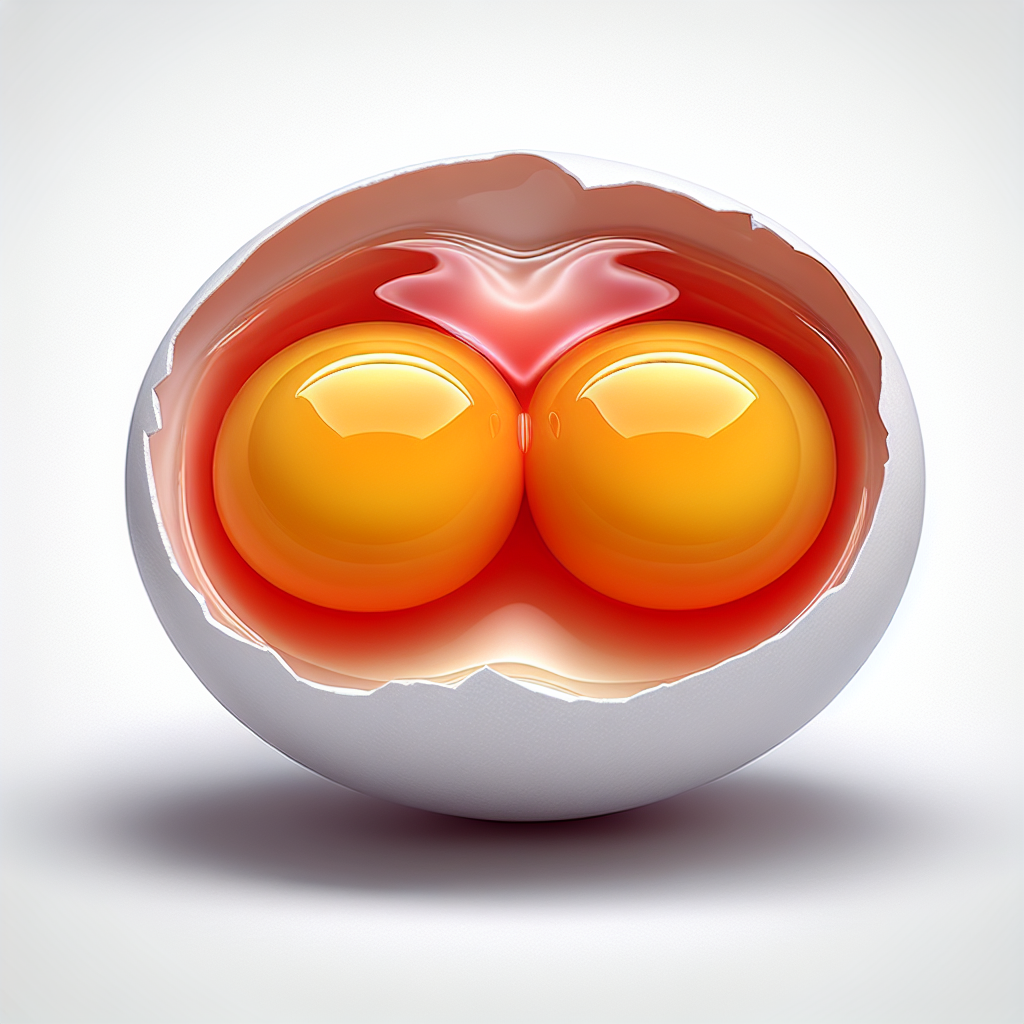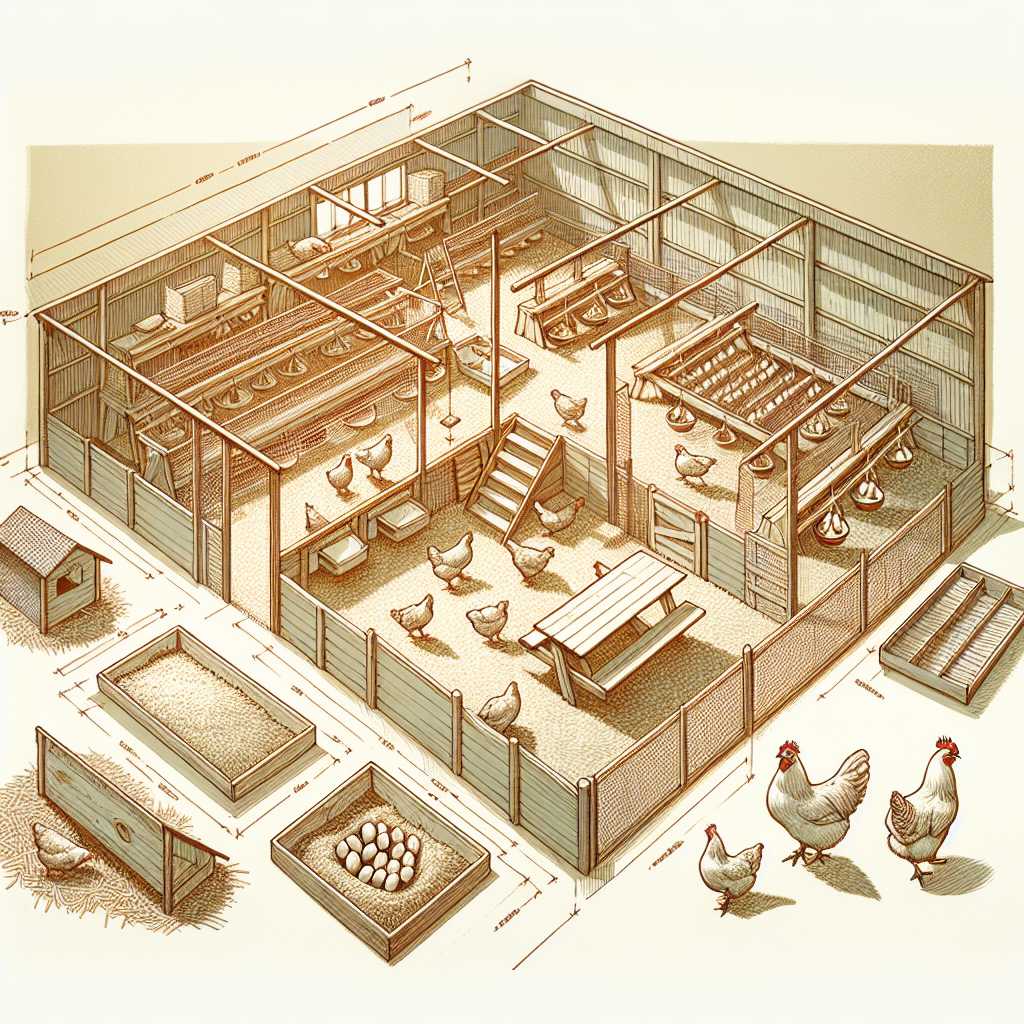Have you ever wondered how the lighting conditions impact the egg production in chickens? It turns out that lighting plays a crucial role in the productivity of these feathered creatures. The amount of light exposure directly influences the chicken’s hormonal balance and, in turn, their egg-laying behavior. In this article, we will explore the fascinating connection between lighting conditions and egg production, uncovering insightful information that sheds light on this intriguing topic. So, get ready to discover the illuminating world of chicken egg production and its relationship with lighting conditions.
Effect of Lighting Duration
Longer Lighting Hours
When chickens are exposed to longer lighting hours, typically extending beyond natural daylight hours, it can have a significant impact on their egg production. The increased duration of light stimulates the hens’ reproductive system, inducing them to lay more eggs. This is especially beneficial during the shorter days of winter when daylight hours naturally decrease. By providing artificial lighting for an extended period, you can maintain a consistent level of egg production throughout the year.
Shorter Lighting Hours
On the other hand, reducing the lighting hours can have the opposite effect on egg production. When hens are exposed to shorter durations of light, it disrupts their internal biological clock, signaling the onset of winter or a period of decreased fertility. This can lead to a decline in egg production as the hens’ reproductive system adjusts to the perceived change in season. However, reducing lighting hours can be useful in certain circumstances when you want to manage the molting process or give your hens a break from laying.
Impact of Natural Lighting
It’s essential to take into consideration the impact of natural lighting on egg production. Chickens are naturally responsive to changes in daylight hours, and their reproductive system is influenced by this environmental cue. As the days lengthen during spring and summer, hens experience increased egg production. Conversely, when daylight hours decrease during fall and winter, their egg production may naturally decline. By understanding and leveraging natural lighting changes, you can optimize egg production in a more sustainable and cost-effective manner.
Effect of Lighting Intensity
Bright Lighting
The intensity of lighting can play a significant role in stimulating egg production in chickens. Bright lighting provides a strong stimulus to hens’ retinas, triggering the release of hormones that regulate their reproductive cycle. When exposed to bright lighting, hens are more likely to experience an increased rate of egg production. However, it’s crucial to strike a balance, as excessively bright lighting can cause stress and negatively impact the well-being of the chickens.
Dim or Low Lighting
Dim or low lighting conditions can have a calming effect on hens and help promote rest and relaxation. This can be particularly beneficial during the nighttime when hens need adequate darkness to sleep. While dim lighting may not directly boost egg production, it can contribute to overall hen welfare and stress reduction. Additionally, providing dim lighting during evenings can help regulate the hens’ circadian rhythm, promoting a sense of normalcy and overall well-being.
Effect of Lighting Color
White Light
White light, similar to natural daylight, can have a positive impact on egg production. It closely mimics the lighting conditions chickens have evolved with, making it a familiar and comfortable environment for them. White light also provides optimum visibility for both hens and caretakers, making it easier to detect any potential issues or changes in the flock.
Colored Lighting
Colored lighting, such as red or blue, can be used to manipulate the hens’ perception of day and night. For example, red lighting during the nighttime can minimize disturbances and help chickens maintain their sleep cycles. Blue light, on the other hand, can have a stimulating effect and potentially enhance egg production. However, the use of colored lighting requires careful consideration as certain colors may cause stress or discomfort to the chickens.
Effect of Light Source
Natural Light
Natural light is highly recommended for chickens as it provides the most ideal lighting conditions. Sunlight is full-spectrum, meaning it contains all colors and intensities necessary for optimal egg production. Exposure to natural light also contributes to the chickens’ overall health and well-being, as it helps regulate their circadian rhythms and provides important vitamin D. However, relying solely on natural light may limit egg production during periods of reduced daylight hours.
Artificial Light
Artificial lighting can be a valuable tool to supplement natural light and ensure consistent lighting conditions throughout the year. By using appropriate light sources, such as LED bulbs, you can replicate the spectrum and intensity of natural daylight. Artificial lighting is particularly beneficial in regions with shorter days or when additional light is needed to achieve desired egg production levels. However, it’s essential to monitor and regulate artificial lighting to prevent excessive exposure or improper conditions.
Effect of Lighting Schedule
Continuous Lighting
Continuous lighting refers to providing a constant and uninterrupted light source for the chickens. This lighting schedule can help maintain consistent egg production throughout the day and can be particularly useful in commercial settings. However, it’s crucial to be mindful of the hens’ natural sleep patterns and ensure they have ample time for rest and darkness to promote their well-being.
Intermittent Lighting
Intermittent lighting involves providing periods of light followed by periods of darkness. This lighting schedule more closely mimics natural lighting variations and allows hens to rest and rejuvenate. Some research suggests that intermittent lighting can benefit egg production by providing the hens with a natural rhythm, similar to what they would experience in the wild. It’s important to strike a balance between light and dark periods to optimize egg production and ensure adequate rest for the hens.
Lighting Manipulation
Lighting manipulation involves adjusting the lighting schedule to achieve specific management goals. For example, manipulating the lighting to induce a molt or control the timing of peak egg production can be advantageous for flock management. It requires careful planning and monitoring to ensure the chickens’ well-being is not compromised. Lighting manipulation should be done gradually and in consultation with poultry experts to avoid unnecessary stress or negative impacts on egg production.
Effect of Lighting Position
Overhead Lighting
Overhead lighting refers to lighting fixtures placed above the chickens, providing a uniform and widespread illumination for the entire flock. This lighting position ensures maximum visibility and minimizes shadows or dark spots within the housing facility. Overhead lighting can be beneficial in facilitating egg collection, as it provides ample light for accurate inspection and retrieval.
Floor Lighting
Floor lighting involves installing lighting fixtures at ground level or near the chickens’ resting and feeding areas. This positioning can help create a more natural lighting environment, with light intensity decreasing as it moves further from the source. Floor lighting can be particularly useful in encouraging natural foraging behaviors and promoting hen welfare. It allows the hens to navigate their environment with ease and provides ample visibility during their daily activities.
Side Lighting
Side lighting involves positioning lighting fixtures at the sides of the chicken housing facility, aimed towards the center or specific areas. This lighting setup can help reduce shadows and provide a well-distributed illumination throughout the space. Side lighting can be beneficial in creating a more natural lighting environment, similar to the sun’s positioning and angle. It allows the hens to experience varying intensities of light throughout the day, promoting their overall well-being and productivity.
Effect of Lighting Flicker
Stable Lighting
Stable lighting conditions, with no flicker or fluctuations in light intensity, are ideal for chickens. This steady illumination provides a predictable environment and minimizes potential stress or discomfort. Stable lighting conditions are crucial for maintaining optimal egg production and overall well-being of the hens.
Flickering Light
Flickering light can have detrimental effects on egg production and hen welfare. It can cause stress, confusion, and disrupt the hens’ natural behavioral patterns. Flickering light may also have a negative impact on their sleep cycles and overall health. It’s important to ensure that lighting fixtures are of high quality and maintained properly to prevent any flickering or irregularities in the light source.
Effect of Lighting on Egg Quality
Shell Quality
Lighting conditions can influence the quality of eggshells. Adequate lighting, especially with the correct duration and intensity, helps promote strong and well-calcified eggshells. Insufficient lighting or sudden changes in lighting conditions may negatively impact the quality of eggshells, making them thinner, more fragile, or prone to deformities.
Yolk Color
Lighting conditions can also affect the color of the yolk in eggs. Chickens exposed to natural or bright artificial lighting tend to produce eggs with vibrant, golden yolks. This is due to the higher levels of xanthophylls, natural pigments found in the diet, that are absorbed and deposited in the yolks. Dim lighting or a deficiency in xanthophylls can result in paler yolk color.
Egg Weight
The duration and intensity of lighting can influence the overall weight of chicken eggs. Proper lighting conditions that provide an appropriate stimulus to the hens’ reproductive system can contribute to larger egg size and weight. Inadequate or irregular lighting may restrict egg development and result in smaller or lighter eggs.
Egg Size
Similar to egg weight, lighting conditions can impact the size of chicken eggs. Consistent and optimal lighting conditions promote the development of larger eggs. On the other hand, irregular or insufficient lighting can lead to smaller egg size. It’s essential to maintain appropriate lighting conditions to achieve desirable egg size and meet market expectations.
Effect of Lighting on Hormonal Regulation
Melatonin
Lighting conditions affect the production and regulation of melatonin, a hormone involved in controlling circadian rhythms and sleep patterns. Exposure to bright artificial light, especially during the nighttime, can suppress the production of melatonin in chickens, disrupting their natural sleep cycle. Inadequate darkness periods or excessive exposure to artificial light may interfere with melatonin levels and negatively impact the overall hormonal balance of the hens.
Pineal Gland
The pineal gland, responsible for melatonin production, is influenced by lighting conditions. The gland receives direct input from the retina, allowing it to sense changes in light intensity and duration. By manipulating lighting conditions, you can influence the pineal gland’s activity and subsequently regulate the reproductive hormones involved in egg production.
Reproductive Hormones
Lighting conditions play a critical role in the regulation of reproductive hormones in chickens. Exposure to appropriate lighting, particularly with longer durations and higher intensities, stimulates the release of hormones such as follicle-stimulating hormone (FSH) and luteinizing hormone (LH). These hormones promote follicle development and ovulation, ultimately leading to increased egg production. On the contrary, inadequate or fluctuating lighting conditions can disrupt the hormonal balance and result in reduced egg production.
Management Strategies for Optimizing Egg Production
Lighting Schedule Planning
Developing a well-thought-out lighting schedule is crucial for optimizing egg production in chickens. Consider factors such as the desired egg production level, natural daylight variations, and the specific needs of your flock. Create a consistent lighting schedule that ensures adequate light exposure, appropriate darkness periods, and gradual transitions when changing lighting conditions.
Lighting Equipment Selection
Choose lighting equipment that matches the specific requirements of your flock and production goals. Consider factors such as light spectrum, intensity, and energy efficiency. LED lighting is commonly recommended due to its versatility, long lifespan, and adaptability to mimic natural daylight. Consult with lighting experts or poultry specialists to select the most suitable lighting equipment for your operation.
Monitoring and Adjusting Lighting Conditions
Regularly monitor and evaluate the lighting conditions in your chicken housing facility. Use light meters or lux meters to measure light intensity, ensuring it falls within the optimal range for your flock. Conduct periodic checks to verify the functionality of lighting fixtures and address any issues promptly. If necessary, make adjustments to the lighting schedule or equipment to maintain optimal conditions for egg production and overall hen welfare.
In conclusion, lighting conditions have a profound impact on egg production in chickens. The duration, intensity, color, source, schedule, position, flicker, and even hormonal regulation can be influenced by lighting. By understanding these effects and implementing appropriate management strategies, such as planning lighting schedules, selecting suitable lighting equipment, and monitoring conditions, you can optimize egg production and promote the well-being of your chickens.




